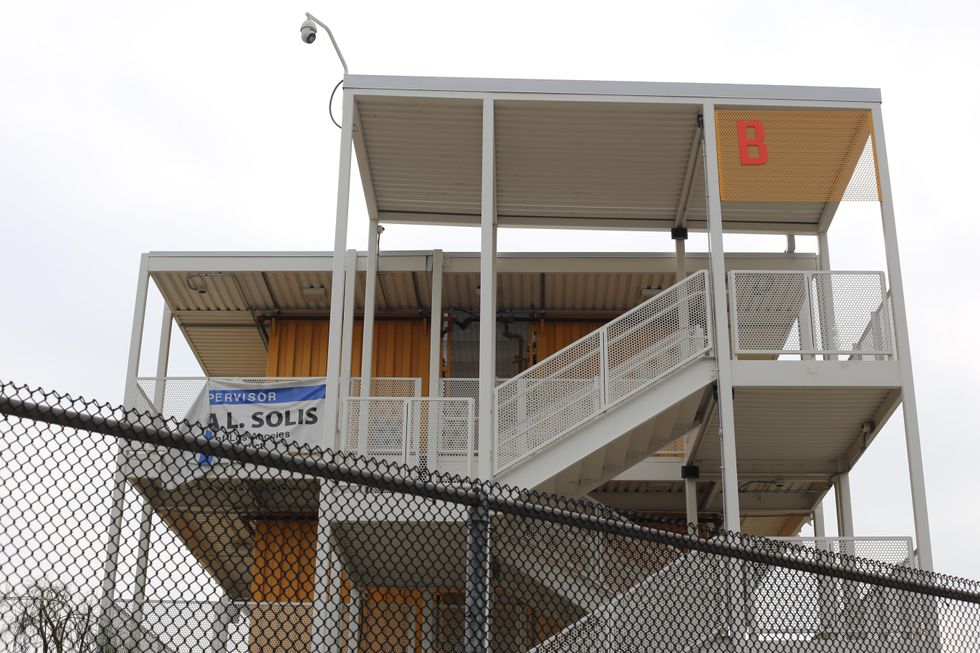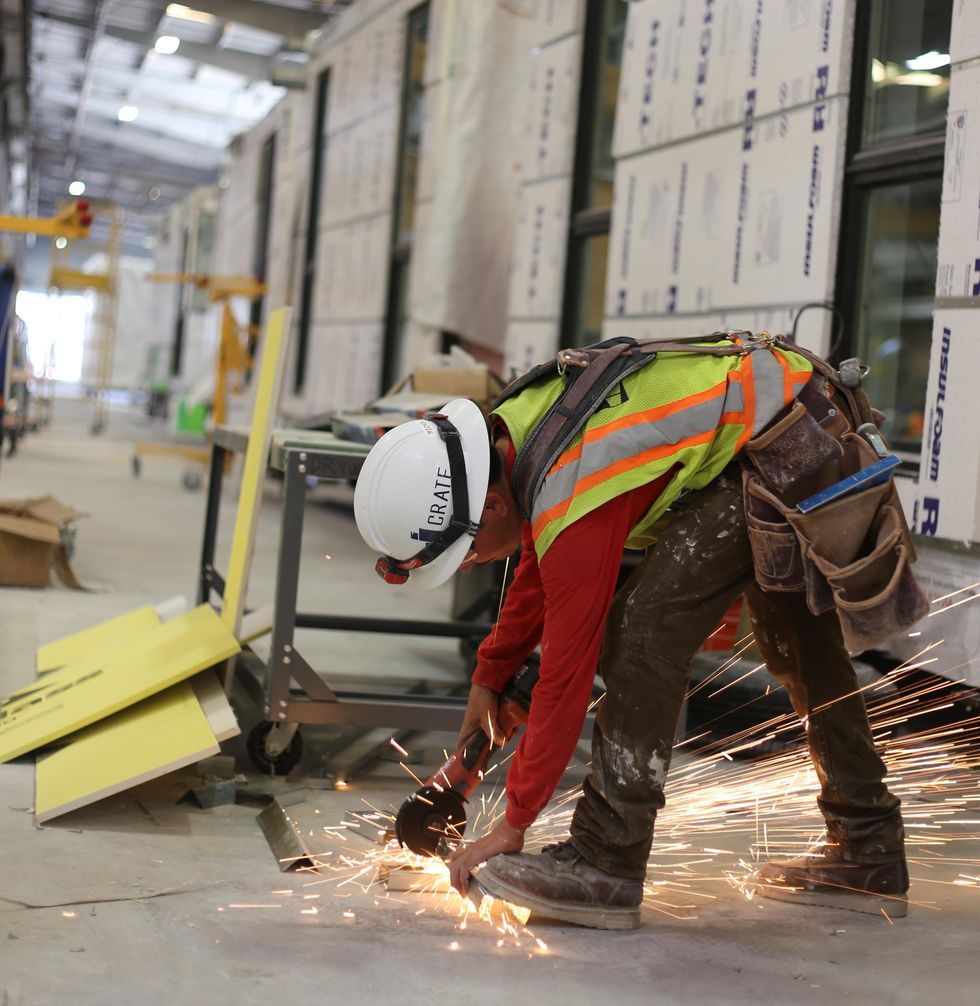Can more accessory dwelling units help a city with a chronic housing shortage?
A wave of new ADU startups that are based in L.A. or serving the region are betting on it. ADU companies like Otto (formerly known as Homestead), which focus on converting pre-existing structures (such as a garage) into housing, serve as a one-stop shop that will help homeowners with financing, design, permitting and labor. Other companies like Azure Printed Homes, Cover, United Dwelling and Villa Homes offer factory-built ADUs that are constructed off-site — also known as “prefab” ADUs. Others still, such as Cottage (based in San Francisco) partner with local contractors and help homeowners design, build and attain permits for their own custom ADUs.
ADUs (also known as granny flats, in-law apartments or backyard homes) describe a category of small, in most cases self-contained homes that can be built beside the original property. A prospect that’s currently trending in Los Angeles, where a chronic housing shortage and sky-high rents coupled with a 2017 state law forcing cities to relax their ADU regulations.
But as novice ADU builders soon discovered, constructing a small house isn’t a small task.
“I wouldn’t say [..building an ADU] is exactly easy, almost anywhere,” said Celeste Goyer, the policy director of Casita Coalition, an L.A.-based organization focused on expanding the use of ADUs for affordable housing throughout the state. “You can’t just go home and pick up a hammer, and have your cousin help you build your ADU. And so expectation management for everyone involved is important.”
The process of getting approved for an ADU normally takes months.
“Generally, many people struggle with the length and complexity of the permitting process and feel like their jurisdictions impose unnecessary red tape in the permitting process,” said Alex Czarnecki, founder and CEO of the custom ADU firm Cottage.
But a number of additional laws may make ADU construction easier in California. Last year Governor Gavin Newsom signed SB 9 into law, which allows California homeowners to build a second house on a single-family zoned lot. Another law known as AB 221 requires local authorities to act on ADU permit applications within 60 days otherwise it’s automatically approved.
“It’s common for certain municipalities to take longer than that to respond to an application or provide incomplete sets of comments,” said Czarnecki. “This drags out timelines for permitting and ultimately impacts the pace at which we can add housing.”
Despite the new laws, few homeowners, Czarnecki said, should attempt to build an ADU by themselves.
“The fact remains that the average homeowner is not a land developer and is not trained or prepared to oversee and manage the design and construction of a new unit on their lot,” added Czarnecki.
To that end, the heads of some ADU companies still believe more has to be done to improve financing the expensive building projects — as well as making them more affordable to low-income and moderate-income individuals. A typical prefab ADU ranges anywhere from $140,000 to $300,000. Custom ADUs are even more expensive. Converting a garage is cheaper, but in L.A., the process can easily approach six figures. None of which factors in the extra costs of permits, which ADU firm Modal estimates costs anywhere between $4,000 to $8,000 in Los Angeles.
There are few mainstream financing options for ADUs available, and renovation loans or cash-out refinancing often don’t cover the entire cost of the project. In a 2021 survey of homeowners by UC Berkeley, nearly 62% said they relied on cash savings or money from a friend or relative to pay for their ADU.
ADU advocates often tout it as an “affordable housing” solution — assuming that property owners will rent them out as an extra source of income. But with the median price of a single-family dwelling in L.A. County almost nearing $1 million, building an ADU is likely an opportunity reserved for more high-income individuals.
“Financing is really the only thing I think of that the city of L.A. and everywhere else really needs to work on. I think L.A. has been doing great with ADU use, and hopefully it will get better,” said Ross Maguire, CEO of Azure Printed Homes.
Samuel Schnieder, the CEO of Otto, said that ADU financing is a major barrier to expansion. Adding that, “It’s often a Catch-22 that the people who are the best equipped or the most enthusiastic about getting an ADU are the ones who can’t necessarily afford it.”
The California Housing Finance Agency this year began offering up to $40,000 in grants for such individuals, but it only covers new ADU “pre-construction” costs, which include everything from impact fees to permits to site prep. In Los Angeles, homeowners with an income below $180,000 qualify for such grants.
A total of 840 people in California have received grants since September — with all but a fraction receiving the full amount, a CHFA spokesperson confirmed to dot.LA.
First launched in 2019, Azure Printed Homes, based out of Culver City, relies on robotic printers to speed up the construction process. The company said it can 3D-print the walls of a 120-square foot unit in less than a day.
Maguire told dot.LA that Azure — which opened up reservations earlier this year — has received pre-orders for 167 units from 119 customers, totaling over $19 million in pre-orders.
But it’s unlikely you’ll see most of these units advertised as new rentals on Craigslist. Maguire says that most of Azure’s customer base desire an ADU to have more space for themselves or to house relatives, rather than to rent out as an additional source of income.
As such, some homeowners opt for factory-built ADUs instead of a more customized option, opting to shorten the timeline for inspections.
“Because our units are pre-approved with the State of California, there’s not a building and safety check that needs to happen on a local level with the city or county of L.A.,” Maguire told dot.LA..
However, even pre-fab ADUs have to be inspected on-site by the local planning authority. “(...the L.A.) Planning Department needs to look at how those modules interact with a specific site themselves, a process that can't be pre-approved as they are site specific,” confirmed a spokesperson for Azure.
In an effort to make the ADU permitting process faster, last year, the city of Los Angeles launched a set of “Standard Plans” that were pre-approved by LADBS. But such plans aren’t cheap — and won’t exempt homeowners from inspections.
“It should be noted that regardless of what pre-approved plan you choose, pre-approved plans still must go through the normal site-specific checks in order for the project to receive a permit,” said Czarnecki.
And if homeowners have the misfortune of building a Standard Plan ADU on an oddly-shaped lot or somewhere with atypical characteristics, they may have to go back to square one. In other words, their ADU will no longer be considered “pre-approved” and will have to go through the longer permitting process.
“Although the Standard Plans are a good jumping off point for creating a product that anyone can use -- at the end of the day, they’re mostly more expensive plans from what I’ve seen,” said Otto’s Schneider.
Casita Coalition and groups like California YIMBY are calling for better financing options for ADUs, particularly those that benefit individual cash-poor homeowners. At present, new ADUs are predominantly built in wealthier, whiter areas. In order for ADUs to actually help bridge the racial-wealth gap, policy experts say they have to actually be a viable option for the less affluent.
“I would be very pleased if more financing options [..for ADUs] developed from credit unions and community financial institutions to provide ADU-tailored loans to help lower income and moderate income home owners build ADUs,” Goyer told dot.LA.
Until then, the dream of Angelenos generating income from their backyards may remain just that.
From Your Site Articles
Related Articles Around the Web



